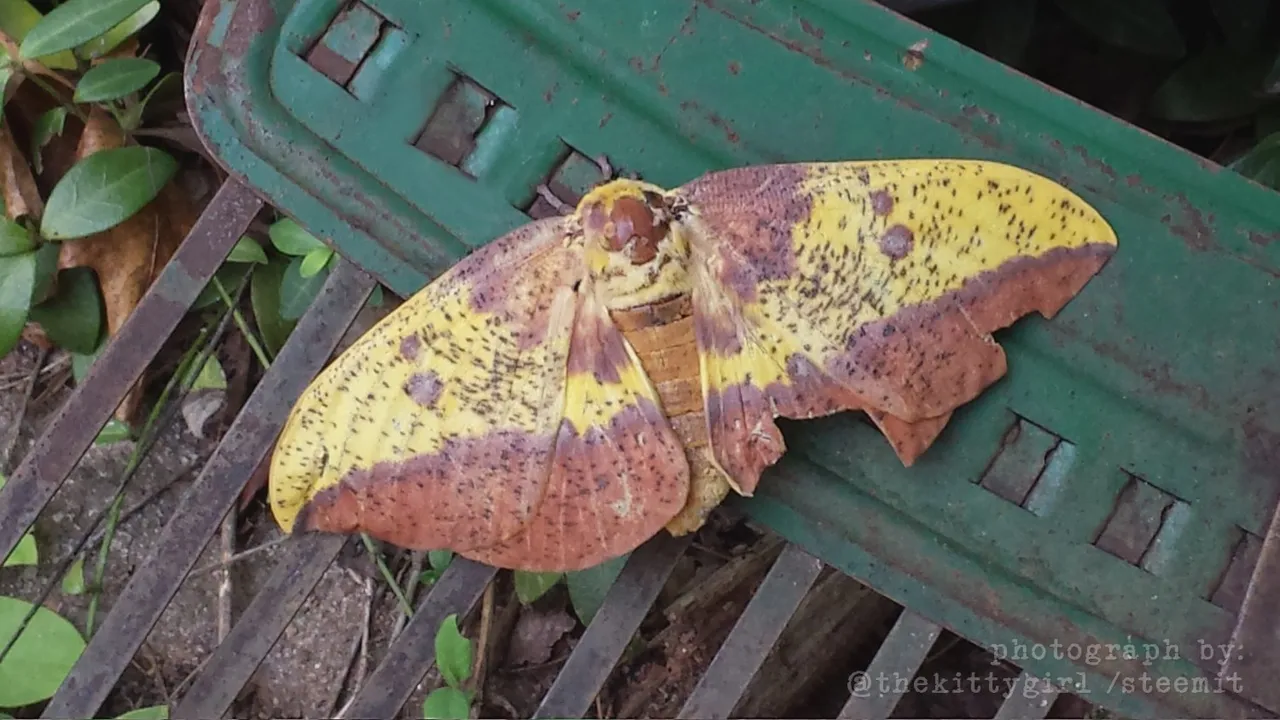
• FEMALE IMPERIAL MOTH, PHOTO BY ME •
Of course, well-bred ladies should not consort with rakes.  Sorry, I just had to do that...
Sorry, I just had to do that...
This species has coloring that mimics decaying leaves, which affords it some measure of protection, especially in the autumn. This is particularly useful since the moths enjoy nibbling on the leaves of hardwood trees, such as oaks, elms, and sassafras.
The Imperial Moth has a wide geographical range in the Western Hemisphere — all the way from Argentina to Canada. In North America, the moths appear mostly between the Rocky Mountains eastward to the Atlantic Ocean. Several websites I visited noted their populations have decreased in their northernmost reaches in recent years, however. Reasons given are not certain, but are thought to be due to the use of pesticides, use of particular styles of outdoor commercial lighting, and confusion in reporting similar-appearing species of the Eacles genus.
 😊
😊SOURCES
1 University of Florida: Imperial Moth
2 Wikipedia: (Eacles imperialis)

a big hug is due to @enginewitty for designing the following personal banner for me 🤗




